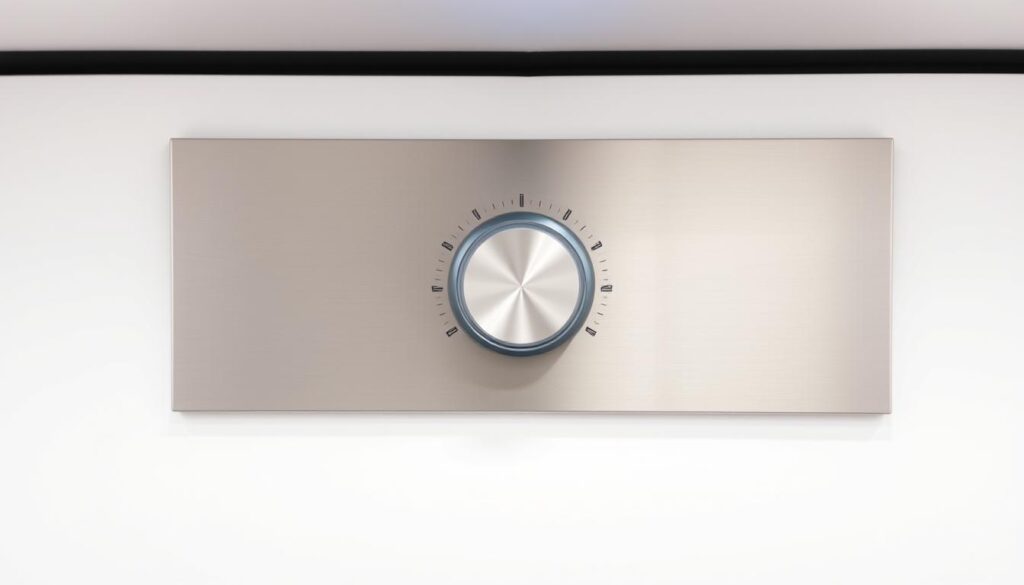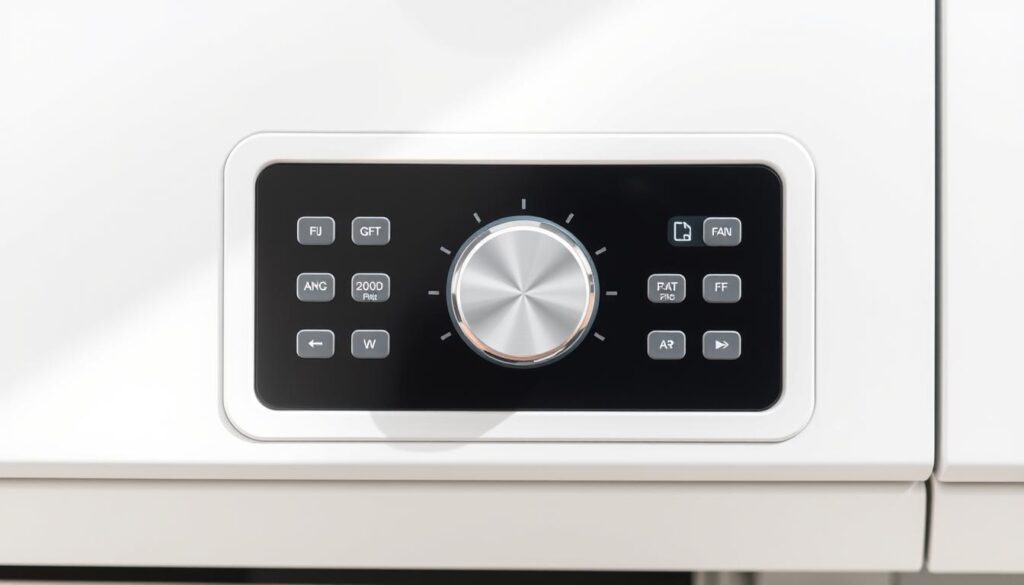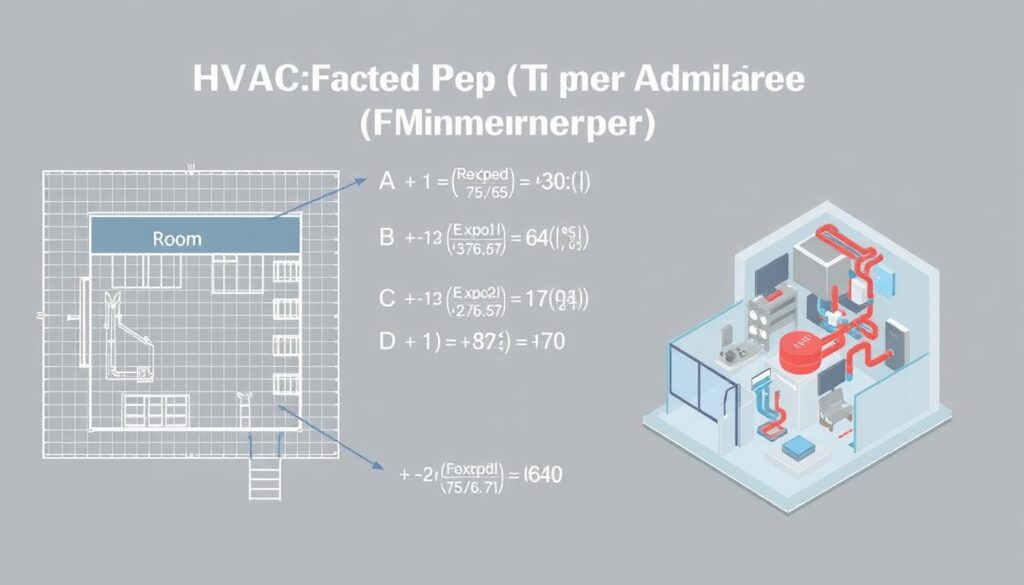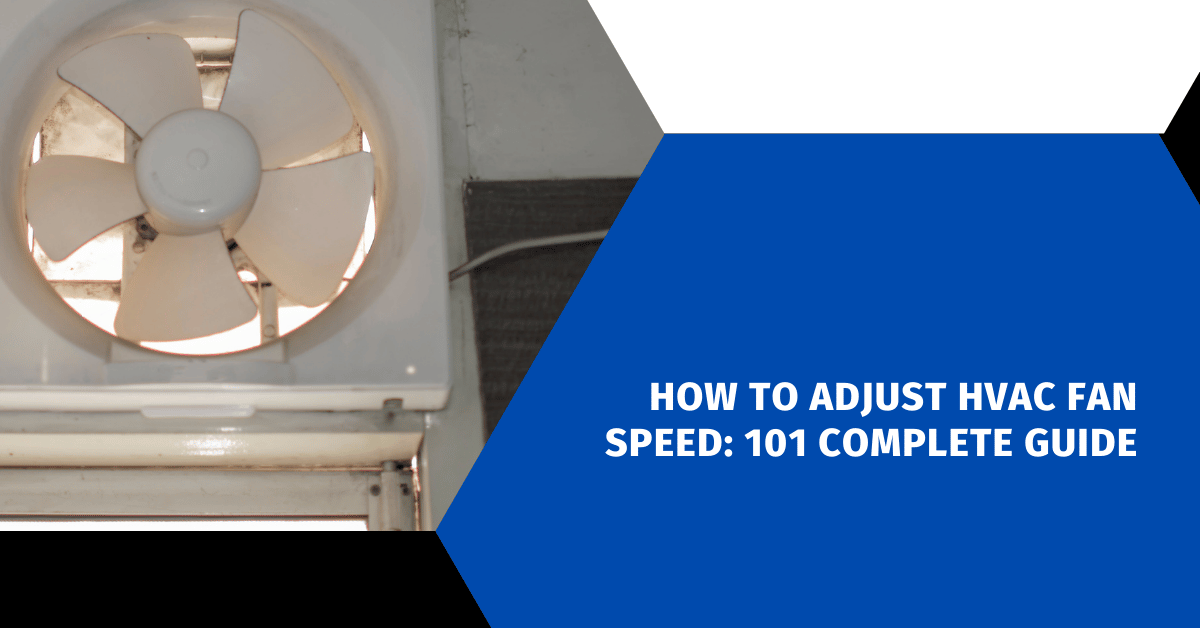Affiliate Disclosure
HVAC Guide Guys is a participant in the Amazon Services LLC Associates Program, an affiliate advertising program designed to provide a means for sites to earn advertising fees by advertising and linking to Amazon.
How to Adjust HVAC Fan Speed? Are you tired of uneven temperatures and high energy bills? Learning how to adjust your HVAC fan speed could be the answer. Your home’s comfort relies on the right fan settings for better airflow and energy use.

Changing your AC fan settings is more than a technical task. It’s about making your home the perfect place to be. Many homeowners don’t know that simple fan speed changes can greatly improve their HVAC system’s performance and cut down on energy costs.
This guide will teach you everything about adjusting your HVAC fan speed. You’ll learn about blower systems and how to set them just right. You’ll know how to change your home’s climate control for the better.
Key Takeaways
- Learn precise methods for adjusting HVAC fan speed
- Understand the impact of fan settings on home comfort
- Discover energy-saving strategies for your HVAC system
- Identify potential performance improvements
- Gain insights into professional fan speed optimization techniques
Table of Contents
Understanding HVAC Blower Systems
Your home’s HVAC system has many parts working together. The blower motor is key, moving air around your home.
The blower motor controls air flow and temperature. It pushes air through ducts, keeping your home comfy.
Key Components of the Blower System
- Blower Motor: The primary driver of air movement
- Fan Wheel: Helps distribute air effectively
- Air Filter: Protects the system from dust and debris
- Electrical Controls: Manage air handler speed adjustment
Impact on Home Comfort
A good blower system makes your home comfy. It:
- Keeps temperatures steady
- Improves air flow
- Lowers humidity
- Filters air quality
Evaporator Coil Connection
The blower motor and evaporator coil work together. This teamwork ensures the air is cooled or heated right.
| Blower System Component | Primary Function | Impact on Comfort |
|---|---|---|
| Blower Motor | Air Movement | Critical for Circulation |
| Fan Wheel | Air Distribution | Ensures Even Airflow |
| Electrical Controls | Speed Regulation | Optimizes Temperature |
Knowing about these parts shows how complex your HVAC system is. It highlights the need for regular checks and adjustments.
Explore Our HVAC Shop
Looking for top-rated HVAC tools, parts, and accessories? Visit our shop and find the perfect solution for your needs.
Visit the ShopTypes of HVAC Fan Motors
Knowing about HVAC fan motors can make your home’s heating and cooling better. Variable speed hvac operation has changed home comfort. It gives you more control over temperature and airflow.
- Single-Speed Motors: The most basic option that runs at one constant speed
- Multi-Speed Motors: Provide several preset speed settings
- Variable-Speed Motors: Offer the most advanced and flexible performance
Single-speed motors are the traditional choice. They run at full speed all the time. They’re cheaper but use more energy. A furnace fan speed switch on these models allows minimal adjustment.
Multi-speed motors offer more flexibility. They have three speed settings: low, medium, and high. They help circulate air better and balance temperature in different rooms.
Variable-speed motors are the top of HVAC technology. They adjust airflow slowly, giving you precise temperature control and saving energy. These motors adjust based on your home’s heating and cooling needs.
Choosing the right motor type can dramatically improve your home’s comfort and energy efficiency.
When picking a motor, think about your home’s size, local climate, and budget. Variable speed motors might cost more at first. But they can save a lot on energy bills in the long run.
Benefits of Proper Fan Speed Adjustment
Adjusting your air conditioner fan settings can make your home more comfortable and save energy. It’s not just a technical task. It’s a way to improve your living space and cut down on energy bills.
Knowing the benefits of controlling fan speed can help you make better choices for your home’s climate control.
Energy Efficiency Improvements
Changing your HVAC fan speed can lower your home’s energy use. By adjusting your air conditioner fan settings, you can:
- Save 20-30% on electricity
- Lower your monthly bills
- Reduce strain on your system
“Smart fan speed management can save homeowners significant money on energy costs.” – HVAC Energy Experts
Enhanced Indoor Air Quality
Adjusting your HVAC fan isn’t just about saving energy. It also improves your indoor air. Proper fan speed helps:
- Boost air circulation
- Lower humidity
- Make air filtration more effective
Better Temperature Control
Setting your fan speed accurately leads to more even temperatures in your home. You’ll notice:
- Even heat and cool distribution
- Quicker room temperature changes
- Less hot and cold spots
By learning and using these fan speed tips, you can make your home more comfortable and efficient.
Explore Our HVAC Shop
Looking for top-rated HVAC tools, parts, and accessories? Visit our shop and find the perfect solution for your needs.
Visit the ShopHow to Adjust HVAC Fan Speed
Changing the central air fan speed needs careful thought and technical skills. Some homeowners might want to try it themselves. But, getting help from a pro is best for adjusting the fan speed.

Before you try to change the fan speed, know the risks and how complex it can be. The steps include:
- Find the fan speed control switch or dial on your HVAC system
- See what speed it’s set at now
- Choose the right speed for your home comfort
- Adjust it a little at a time
Most HVAC systems today have multi-speed or variable-speed motors. These let you control the fan speed well. They help with better airflow, saving energy, and keeping your home comfy.
Professional HVAC technicians say to talk to an expert before changing fan speeds. This helps avoid damaging your system.
Things to think about when adjusting fan speed are:
- Keeping the indoor temperature steady
- Managing humidity
- Using less energy
- Reducing wear and tear on the system
Remember, wrong fan speed changes can hurt system performance, raise energy costs, and even cause equipment failure.
Safety Considerations Before Adjustments
Working with HVAC systems needs careful preparation and strict safety rules. Your home’s comfort and safety depend on following important guidelines when trying hvac blower motor control or diy hvac fan adjustment.
Electrical systems can be unpredictable and dangerous if not handled correctly. Professional technicians suggest taking specific precautions before making any changes to your HVAC system.
Power Disconnection Protocol
Safety begins with proper power management. Before touching any HVAC parts, you must:
- Locate your home’s main electrical panel
- Switch off the circuit breaker connected to the HVAC system
- Verify power disconnection using a voltage tester
- Wait at least 5 minutes to discharge any residual electrical current
“Electricity doesn’t take holidays. Always assume a circuit is live until proven otherwise.” – HVAC Safety Experts
Required Tools and Equipment
Successful diy hvac fan adjustment needs specific tools. Gather these essentials before starting:
- Multimeter
- Insulated screwdrivers
- Work gloves
- Safety glasses
- Flashlight
System Compatibility Check
Not all HVAC systems support manual speed adjustments. Check your system’s specifications carefully to avoid potential damage. Consult your system’s manual or a professional technician to confirm compatibility before attempting any hvac blower motor control modifications.
Explore Our HVAC Shop
Looking for top-rated HVAC tools, parts, and accessories? Visit our shop and find the perfect solution for your needs.
Visit the ShopCalculating Proper CFM Requirements
Knowing the right cubic feet per minute (CFM) for your air conditioner is key. It ensures your HVAC system works at its best. Adjusting the air handler speed is based on accurate airflow measurements.

- Home square footage
- Ceiling height
- Number of rooms
- Insulation quality
- Climate zone
Experts suggest a baseline airflow of 400 CFM per ton for most homes. This helps keep your home cool and prevents system overload.
To find your CFM needs, multiply your system’s tonnage by 400. For example, a 3-ton system needs about 1,200 CFM to work well.
Proper CFM calculation ensures your HVAC system runs efficiently, reducing energy consumption and extending equipment lifespan.
Remember, each home is different. Your home’s unique features can affect the best air handler speed. Talking to a professional HVAC technician can give you the best advice for your home.
Seasonal Fan Speed Optimization
Your HVAC system changes with the seasons. It’s key to adjust your AC fan settings for comfort. Learning how to tweak your thermostat fan speed can greatly enhance your home’s temperature and air quality.
Each season brings its own fan speed challenges. You need to think carefully about how your HVAC system performs.
Summer Settings Guide
In summer, you want to cool and dehumidify your home. Here’s how to set your fan speed:
- Lower fan speeds help remove moisture better.
- Auto mode stops the fan from running all the time.
- Even airflow is key for cooling.
Winter Adjustment Tips
Winter needs a different fan speed strategy. Focus on heating evenly:
- Slow fan speeds spread heat gently.
- Continuous fan mode ensures warmth is spread out.
- Keep big rooms from getting cold spots.
Humidity Control Strategies
Fan speed is crucial for indoor humidity. Adjusting your AC fan settings can keep your home comfortable:
| Humidity Level | Recommended Fan Speed | Purpose |
|---|---|---|
| High Humidity | Lower Speed | Boost Dehumidification |
| Low Humidity | Moderate Speed | Stop Over-Drying |
| Balanced Humidity | Auto Mode | Keep Comfort |
Pro tip: Check your HVAC maker’s advice for your system’s best settings.
Multi-Speed and Variable Speed Operations
Variable speed HVAC systems are a big step forward in home climate control. They are different from old single-speed systems. These new systems offer more flexibility in controlling your home’s temperature and air quality.
With variable speed HVAC, your system can change fan speeds as needed. This makes your home more comfortable and efficient. The furnace fan speed switch is key in this process. It helps control airflow precisely.
- Adjusts airflow based on specific cooling or heating requirements
- Reduces energy consumption by operating at lower speeds
- Provides more consistent temperature distribution
- Minimizes noise levels during operation
Homeowners gain from these advanced systems in two ways. They get better comfort inside and save a lot on energy. The system works smarter, not harder, thanks to adjustable fan speeds.
| System Type | Energy Efficiency | Comfort Level |
|---|---|---|
| Single-Speed | Low | Standard |
| Multi-Speed | Medium | Good |
| Variable Speed | High | Excellent |
Thinking about a variable speed system? Get it installed by a pro. These systems need expert setup to work their best and perform well.
Explore Our HVAC Shop
Looking for top-rated HVAC tools, parts, and accessories? Visit our shop and find the perfect solution for your needs.
Visit the ShopCommon Fan Speed Adjustment Issues
Incorrect hvac blower motor control can cause big problems in your central air system. Knowing about these issues can help avoid expensive fixes and keep your HVAC system running well.
When adjusting the central air fan speed, homeowners often face several common problems. These issues can affect how well your system works and how long it lasts.
- Motor Strain: The wrong fan speed can make your HVAC system’s motor work too hard, leading to early wear
- Airflow Disruption: Wrong adjustments can cut down air flow and make your home less comfortable
- Energy Inefficiency: Fan speeds that don’t match can make your electricity bills go up
Signs that your fan speed adjustments might be off include:
- Strange noises from your system
- Temperatures in your rooms that don’t stay even
- Higher than usual energy bills
- Your system not cooling or heating as well as it should
Experts say it’s smart to have your HVAC system checked regularly. This helps keep the fan speed right and stops mechanical problems before they start.
Getting the fan speed just right needs skill and careful tuning.
If you keep having problems after trying to adjust the fan speed, it’s best to get help from a pro. They can make sure your central air system stays safe and works right.
Conclusion
Learning to adjust your HVAC fan speed can really change your home’s comfort and save energy. By knowing how to change AC fan settings, you can control your home’s climate better. This can also help lower your energy bills.
Your HVAC system’s performance affects your home’s comfort and energy use. Adjusting fan speed right can improve airflow and air quality. It also helps keep your home’s temperature even.
While some can adjust fan speeds easily, others might need a pro. If you’re not sure or run into problems, get help from a certified HVAC tech. They can give you advice that fits your system and home.
Getting good at adjusting HVAC fan speed is a smart move for your home. With the tips from this guide, you’ll know how to make your HVAC system work better. This ensures your home stays comfortable all year.

